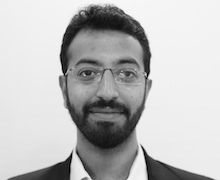
Indian philanthropy, especially individual philanthropy, is at a critical juncture.
Despite a slowdown in foreign funding in recent years, the quantum of private funding has grown substantially led by individual philanthropists. According to the Bain Philanthropy Report 2019, private funds raised for the social sector in India grew at a compound annual growth rate of 15%, from INR 40,000 crore in 2014 to INR 70,000 crore in 2018. Though such numbers are encouraging, India still needs an additional INR 4.2 lakh crore each year to achieve even five of the 17 Sustainable Development Goals (SDGs).
Anchored by the United Nations, the SDGs offer a globally accepted language and uniform metrics for all countries against which to measure and compare progress. The shared agenda also allows national and subnational stakeholders to work towards the same goals, regardless of their point of entry or operational scale.
To all organisations in India’s development landscape, this is a mission call.
With a growing economy and rising wealth, the role of domestic private philanthropy is becoming increasingly important. The vision of redefining India’s potential without leaving anyone behind is not a dream. The focus now needs to go beyond the quantum of philanthropy towards asking how and where those rupees can be leveraged for maximum impact.
It is important that Indian donors consider the design and impact of their philanthropic activities and the intersection with development activities carefully. India’s ranking on different generosity indices could rise significantly if contributions made through informal channels are also calculated.
A potential donor needs to decide where to spend the budgeted money — education, healthcare, disaster relief, public policy or arts and culture. Philanthropists need to view the system as a whole and identify the leverage points, the areas within a complex system where a small shift can produce a big change in the entire ecosystem.
There have been instances where successful systemic changes have occurred by reaching critical mass and philanthropy has played the role of catalyst. Large and effective initiatives can only achieve impact at scale when all the stakeholders work in harmony. The Bill and Melinda Gates Foundation’s Urban Sanitation Community of Practice is a classic example of collaborative action to achieve quantifiable results.
Although this outcome-driven thinking is catching on among philanthropists, it is still nascent. A focus on outcomes can help donors better understand where funds are needed—and in doing so, tackle the problem in a holistic way and ensure that the solutions are sustainable. A powerful way to re-frame one’s approach is to identify the tangible outcomes one aspires to achieve through giving, and then work back to outline the inputs needed to achieve them. It is important to note that it may be difficult to find an existing accurate and measurable key performance indicator (KPI). If so, it makes sense to start with the outcome KPI that fits best, and then work to improve it.
The role of philanthropy is, undoubtedly, set to grow in India and the funds.




